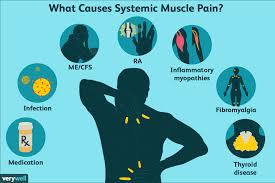Introduction
Carisoprodol, a muscle relaxant, has been used for decades to alleviate pain associated with musculoskeletal conditions. It acts primarily as a central nervous system depressant, providing relief by disrupting the pain-spasm cycle. On the other hand, narcotics, or opioids, are potent analgesics that are often prescribed for moderate to severe pain. Understanding the nuances between these two classes of medications is crucial for healthcare providers in order to provide optimal pain management while minimizing risks.
Section 1: Understanding Carisoprodol
1.1. What is Carisoprodol?
Carisoprodol is a prescription medication primarily used to treat acute musculoskeletal pain. Approved by the FDA in 1959, it has been a common choice for short-term relief due to its muscle relaxant properties. As a schedule IV controlled substance, carisoprodol is recognized for its potential for abuse and dependence, though its risk profile is considered lower than that of many narcotics.
1.2. Mechanism of Action
Carisoprodol works by affecting the communication between the nerves in the brain and the spinal cord. It is believed to inhibit the action of the polysynaptic reflexes, leading to reduced muscle tension. This mechanism is largely facilitated by the drug’s interaction with gamma-aminobutyric acid (GABA) receptors, which are pivotal in promoting relaxation and reducing anxiety.
1.3. Medical Uses
Carisoprodol is primarily prescribed for the management of acute muscle spasms and associated pain. It is typically administered in doses of 250 to 350 mg, taken three times daily and at bedtime, for a maximum duration of two to three weeks. Its short-term use is due to concerns over tolerance and dependence.
1.4. Side Effects and Risks
While carisoprodol can be effective, it is not without side effects. Common issues include drowsiness, dizziness, and headache. More serious risks involve the potential for dependence and withdrawal symptoms, particularly with prolonged use. Healthcare providers must weigh these risks when prescribing Carisoprodol.
Section 2: Understanding Narcotics
2.1. What are Narcotics?
Narcotics, more commonly referred to as opioids, are drugs that are effective in relieving pain but are also associated with a high potential for abuse. Historically used in medicine for their analgesic properties, narcotics include natural opiates derived from the opium poppy and synthetic drugs that mimic their effects.
2.2. Mechanism of Action
Narcotics exert their effects by binding to opioid receptors in the brain, spinal cord, and gastrointestinal tract. This binding leads to a decrease in the perception of pain and an alteration in emotional responses to pain. The interaction also induces feelings of euphoria, which can contribute to their addictive potential.
2.3. Medical Uses
Narcotics are prescribed for various types of pain, including postoperative pain, cancer-related pain, and chronic pain syndromes. Common examples include morphine, hydrocodone, and oxycodone. Dosage varies significantly based on the specific drug and patient needs but typically requires careful monitoring due to the risk of overdose.
2.4. Side Effects and Risks
The use of narcotics comes with numerous side effects, including constipation, nausea, and respiratory depression. Furthermore, the risk of addiction and overdose has led to increasing concerns and regulatory measures surrounding their prescription. Providers must carefully consider these risks when prescribing narcotics.
Section 3: Comparative Analysis
3.1. Efficacy
In terms of efficacy, narcotics generally provide more robust pain relief compared to Carisoprodol, particularly for severe pain. However, carisoprodol may be preferred for muscle spasms due to its specific action on muscle relaxation.
3.2. Safety Profile
Carisoprodol 500 mg has a lower potential for severe side effects and addiction compared to many narcotics. While both classes of medications carry risks, the concern for abuse is significantly greater with narcotics, particularly in light of the opioid crisis.
3.3. Patient Considerations
Choosing between Carisoprodol and narcotics depends on individual patient factors, including medical history, the nature of the pain, and potential for substance abuse. In patients with a history of substance use disorder, carisoprodol may be a safer option.
3.4. Regulatory Perspective
Carisoprodol is classified as a schedule IV controlled substance, while many narcotics fall into schedule II or III categories, reflecting their higher abuse potential. This difference impacts prescribing practices and patient access to these medications.
Section 4: Case Studies
Case studies can provide insight into how both carisoprodol and narcotics are utilized in practice. For example, a patient with chronic back pain may respond well to Carisoprodol for muscle spasms without the need for narcotics, while another patient with postoperative pain may require narcotic analgesics for adequate relief.
Conclusion
In conclusion, both carisoprodol and narcotics serve important roles in pain management but come with distinct advantages and risks. Understanding these differences allows healthcare providers to make informed decisions tailored to each patient’s needs, balancing the effectiveness of pain relief with the potential for adverse effects and dependency.



